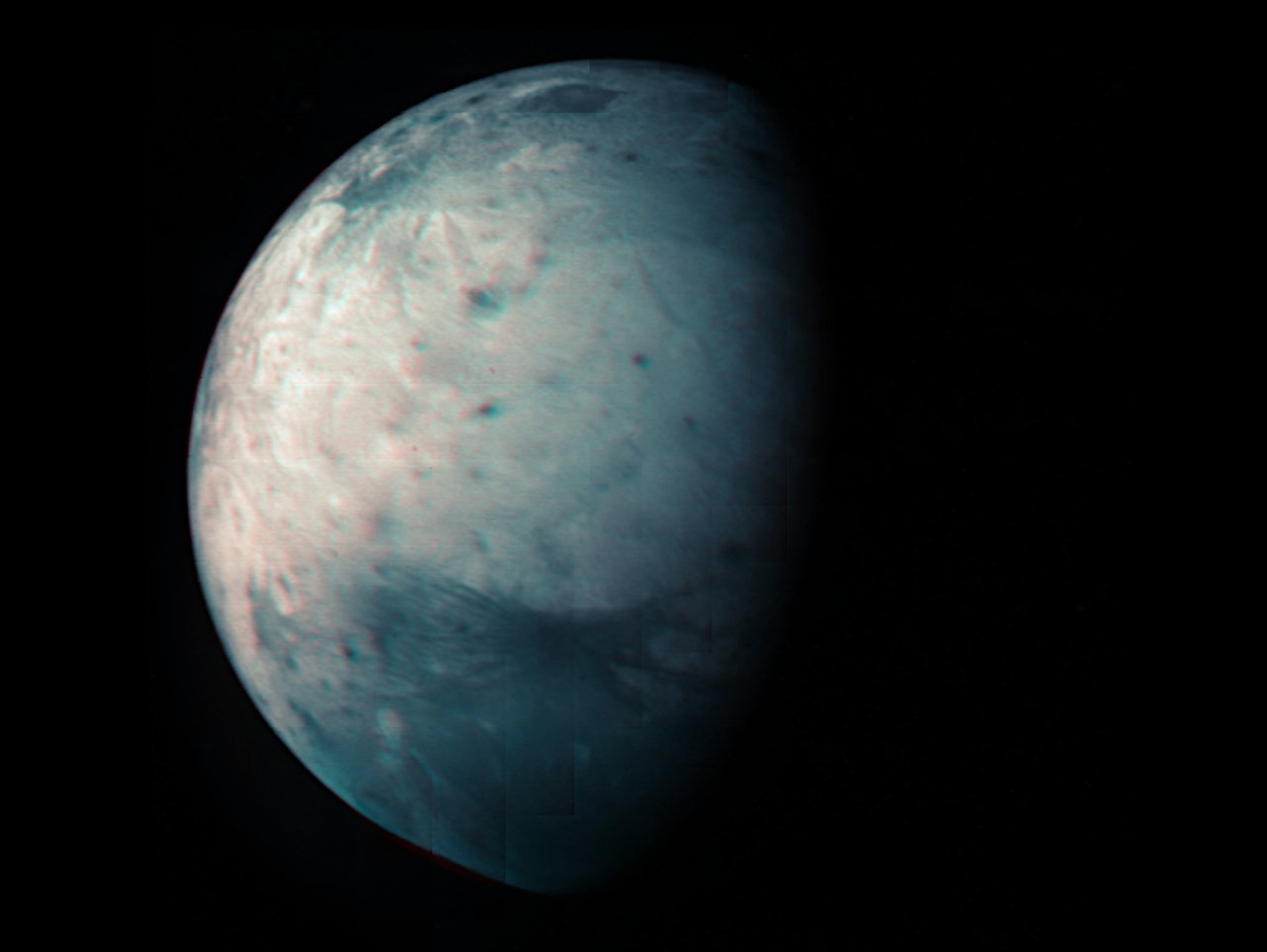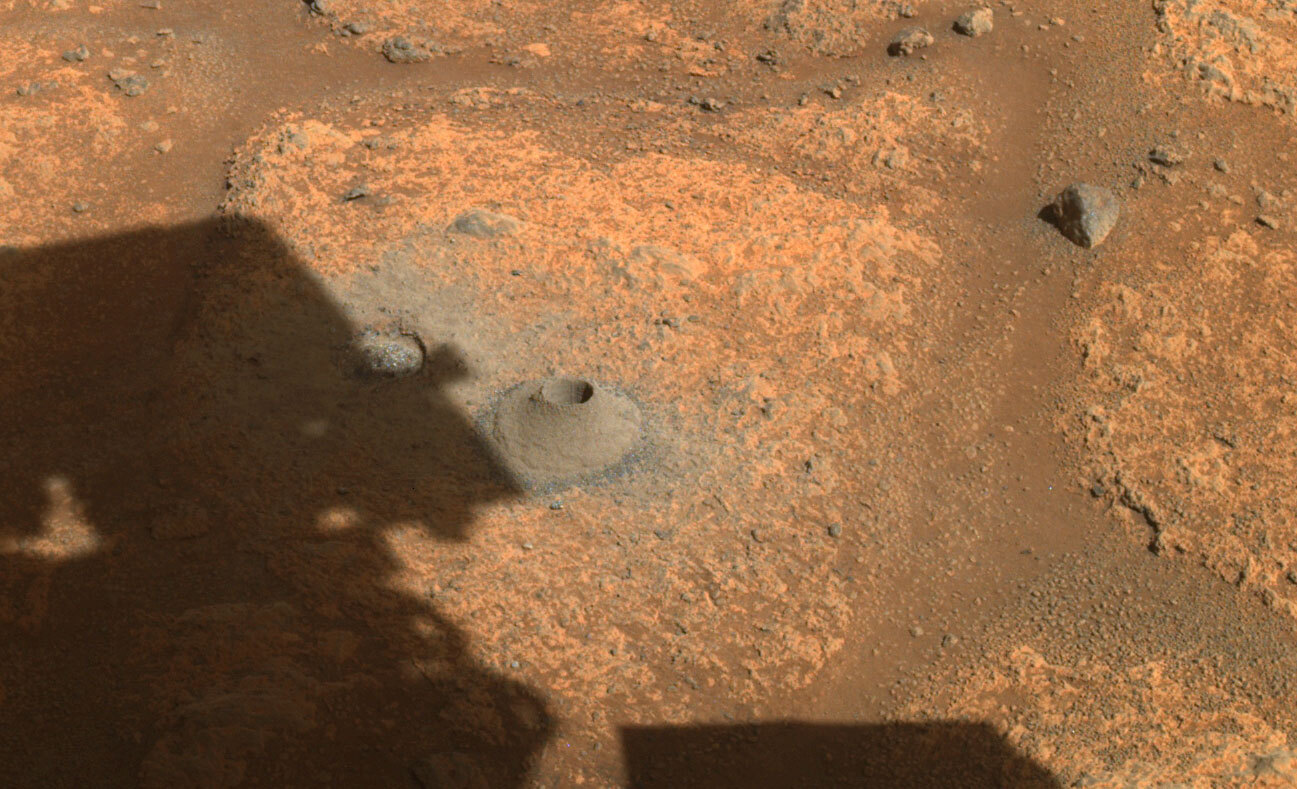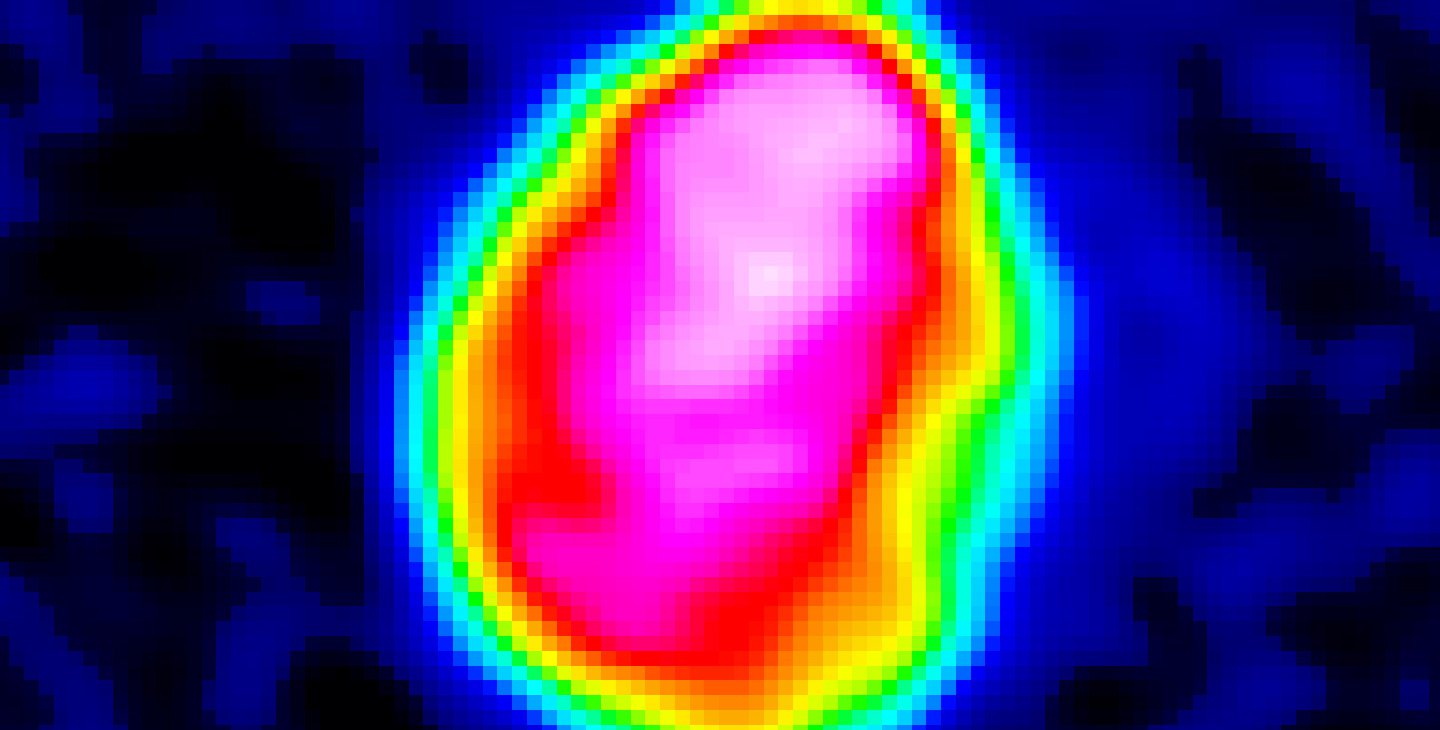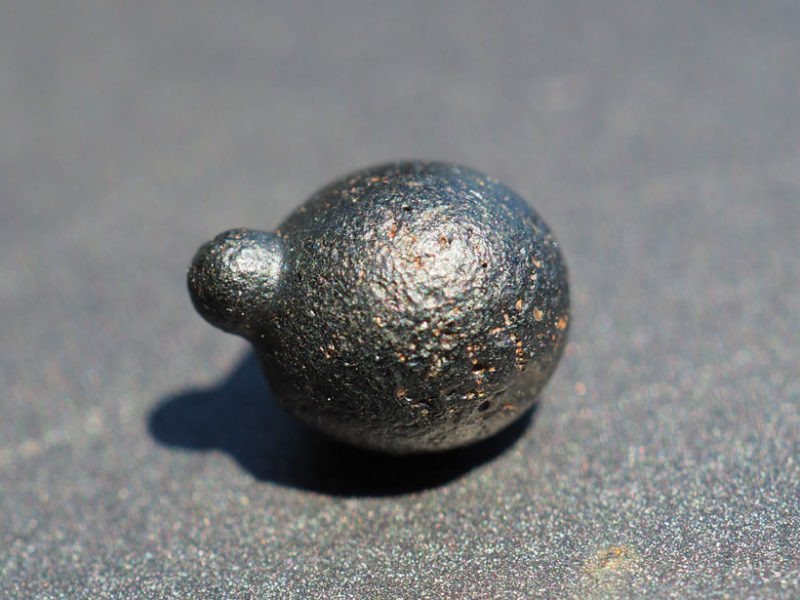Based on X-ray detections from the Neil Gehrels Swift Observatory, scientists used the Chandra X-ray Observatory and found rings called light echoes moving out from a black hole and its companion star, reflecting off the surrounding dust clouds. Plus, solving the puzzle of the Sun and using glassy nodules to find a meteorite impact.
Podcast
Transcript
Hello and welcome to the Daily Space. I am your host Beth Johnson, and I am here to put science in your brain.
Today’s news roundup is all about the solar system. And it wasn’t even my doing. So here goes.
It is very difficult for me to believe, but the Juno mission is celebrating its tenth anniversary. The spacecraft was launched on August 5, 2011, from Cape Canaveral Air Force Station and traveled 2,800 million kilometers over five years to reach Jupiter on July 4, 2016. Since then, Juno has orbited Jupiter 35 times and collected nearly three terabits of data. The mission was recently given an extension and now has another 42 orbits to perform, including flybys of the Galilean moons Ganymede, Europa, and Io.

And today, we have a brand new infrared image of Ganymede taken from the most recent of these flybys. Captured with the Jovian Infrared Auroral Mapper, or JIRAM, instrument, this image brings us new information about the icy moon’s shell and the composition of the liquid ocean underneath. As a reminder, Ganymede is the only moon in our solar system to have its own magnetic field, and that field allows for charged particles from the Sun to create aurorae. Additionally, Jupiter constantly bombards Ganymede with plasma from Jupiter’s magnetosphere. All of these incoming particles can affect the ice on Ganymede.
Co-investigator Alessandro Mura explains: We found Ganymede’s high latitudes dominated by water ice, with fine grain size, which is the result of the intense bombardment of charged particles. Conversely, low latitudes are shielded by the moon’s magnetic field and contain more of its original chemical composition, most notably of non-water-ice constituents such as salts and organics. It is extremely important to characterize the unique properties of these icy regions to better understand the space-weathering processes that the surface undergoes.
From Jupiter and Juno, we now move to Mars and the Perseverance rover, which is finally performing science and not simply babysitting the Ingenuity helicopter. One of the activities Percy is tasked with is the collection of rock samples that it will seal in a tube and leave behind for the future Sample Return Mission to pick up and bring back to Earth. With that in mind, the rover attempted to take a sample this past week, and according to the data returned by Percy, no rock was collected. That’s not good.

Here’s how sampling is supposed to work: Percy has a hollow coring bit and a percussive drill. These are both on the end of the two-meter-long robotic arm. By all accounts, the drill and bit were both engaged in the first attempt, and the sample tube was processed as intended. However, images returned of the inside of the sample tube show no rock. Additionally, a probe is supposed to measure the volume of the sample in the tube, and it didn’t encounter any rock, either.
The Perseverance team is working to analyze all the data and find out just what happened. Jennifer Trosper, a project manager at JPL, stated: The initial thinking is that the empty tube is more likely a result of the rock target not reacting the way we expected during coring, and less likely a hardware issue with the Sampling and Caching System.
Remember, everyone, space is hard, and Mars keeps surprising us by not working as expected. We’re sure Percy and the team will get that first rock sample any day now.
Speaking of rocks we’d like to sample, scientists are preparing for the launch of the Mission to Psyche by working to understand the asteroid as best we can from here on Earth first. To that end, a research team used the Atacama Large Millimeter/submillimeter Array (ALMA) in Chile to map Psyche’s thermal emissions. They managed to do this at a resolution of 30 kilometers per pixel, which is impressive, and they created a map of the asteroid’s surface.

The resulting thermal map shows that Psyche has higher thermal inertia than a typical asteroid, and that could mean it is dense or more conductive than expected. Additionally, Psyche only radiates about 60 percent of the expected heat based on that thermal map, meaning Psyche is no less than 30 percent metal. Based on an analysis of the polarization, or how the light is scattered off the surface of the asteroid, Psyche is covered in rocks that have metallic grains. It’s not a smooth, solid surface.
So, no, Psyche is not a roundish core of a broken protoplanet, but it is heavily metallic and more likely a very primitive asteroid that formed closer to the Sun than its present position. We’ll have to wait for that mission to Psyche to get there and take a sample before we’ll know for certain what the asteroid really looks like and what it’s made of. The paper on this map was published in The Planetary Science Journal with lead author Katherine de Kleer.
We’ve mentioned the Sun several times already today. It provides the charged particles that create aurorae at Ganymede, but those same charged particles also hit Earth’s atmosphere and create aurorae. That’s nice and pretty. It’s a lovely side effect of space weather, but not all space weather is so friendly.
Larger coronal mass ejections can cause big problems here on Earth. Back in 1859, a solar storm hit Earth and caused what we call the Carrington Event, which impacted the telegraph system from Melbourne, Australia to New York. We’re even more reliant on electronics and satellites today. In 1989, another event caused blackouts in Canada. And we were missed by a huge coronal mass ejection in 2012 by just nine days.

Okay, that’s kind of scary. So what do we do? First, how much lead time do we have between a solar event and it hitting Earth and possibly wreaking havoc? It ranges from just several hours to a few days. That’s really not a lot of time, although if we have systems in place to warn us, we can shut down satellites and prepare electrical systems for the potential impact. That could help.
What we really need, though, is a way to predict sunspots and solar flares and all these other types of activity that could affect us here on Earth. Except, we don’t understand how sunspots form. We don’t have a complete picture of the inner workings of the Sun. We know it’s made of distinct regions, and one of those regions is the convection zone — super-hot, turbulent, roiling plasma that takes up the outer 30 percent or so of the Sun’s diameter. Within that zone are convection cells, but we’re not sure how they work. We have some hypotheses, one of which involves circular swirls, similar to what we model in moisture transfer in storm cells here on Earth. However, we have never found evidence of these circular cells. So, that’s great.
Enter Dr. Geoffrey Vasil and his team, who have developed a new, strong theoretical framework for modeling our Sun and those convection cells. Instead of the traditional circular cells we see in so many diagrams, Vasil has proposed that the cells are, per the press release: …tall spinning cigar-shaped columns ‘just’ 30,000 kilometers across.
Vasil goes on to explain: You can balance a skinny pencil on its point if you spin it fast enough. Skinny cells of solar fluid spinning in the convection zone can behave similarly.
By changing the model, the team has managed to properly account for this rapid rotation, which can suppress larger-scale convection and create a more varied pattern of movement in the upper third of the Sun. This new model could help us better understand the Sun’s behavior when it comes to electromagnetic activity, like those sunspots, flares, and ejections. And any further understanding of the Sun might just help us predict a solar storm and help us prevent damage to all our electronic infrastructure and the clouds of satellites happily working away above us.
This work appears in the Proceedings of the National Academy of Science.
Earth is being bombarded by everything today it seems. From solar storms, we now turn to meteors. The best telltale sign of a meteor strike is the impact crater. But unlike the Moon, Earth’s plate tectonics and weathering have a way of making craters disappear over time. Add in some vegetation growth and voila! What craters?

There are, of course, exceptions in places where there is no vegetation and little weathering or tectonics, such as Meteor Crater in Arizona. That’s one major exception, though. To find the crater caused by the impact that killed the dinosaurs required sonar data from the Caribbean and satellite data of the Yucatan plus ground maps of the cenotes that outlined some of the crater’s shape. Not exactly the easiest crater to locate.
Now, however, a team working in Chile’s Atacama Desert, the home of the ALMA telescope, has found a new method of locating evidence for an ancient meteor strike. They have found centimeter-sized nodules made of glass, created at high temperatures and pressures, scattered over hundreds of kilometers in that desert. These were likely formed when an iron-rich meteorite hit the Earth about eight million years ago.
Oh, and I love the name of these nodules: atacamaites. Thank you, geologists.
Atacamaites are a type of impact glass. They’re formed when a large meteor hits the planet with enough force to basically melt the rocks on the surface, throwing the molten material into the air where the cooler temps cause the liquid fragments to resolidify quickly. With no time to form and grow crystals, the resulting rocks are considered glass, and they provide crucial evidence for past meteor strikes. They’re still difficult to find. Only five other groups were found prior to this one in Chile.
The evidence of this strike was first found in 2007 by electrical engineer Michael Warner, who worked out of NOIRLab in La Serena, Chile. He and his son then found some more a few years later, and they sent the samples off to geologist Jérôme Gattacceca at the National Centre for Scientific Research in France. Gattacceca had analyzed meteorites for Warner previously, and in this case, he determined that the samples were impact glass; he has since brought colleagues to the Atacama Desert to help look for more evidence, and they have found over 23,000 atacamaites since 2014. A careful analysis of several of these nodules has revealed that they are about 5% by weight made of extraterrestrial stuff like meteoritic iron, nickel, and cobalt.
As the team reported in Earth and Planetary Science Letters, the impact occurred about eight million years ago, but they haven’t yet found any evidence of a crater. It’s possible that erosion is the culprit; however, the team is continuing to search satellite data and plans to go back to the region to look for the crater again. We’ll keep you updated on their findings here on Daily Space.
As a reminder, when it comes to bombardments, it’s not all giant rocks. Don’t forget to go out this week and watch for the Perseid meteor shower, cloud cover depending. If you can see the night sky, you should get to watch a lovely show of shooting stars and maybe even a few fireballs.
Sometimes we get alerts from different mission teams for reasons we can’t totally identify. In this case, the Chandra X-ray Observatory released a really cool image related to a research paper that came out back in 2016. We’re not quite sure why, but we’re talking about this image release because the science is sufficiently cool anyway. This show wasn’t around back then after all, and the image is newly processed.

So what is this weird set of rings? It turns out, in some cases, we can actually see light traveling through space. In sci-fi movies, you often see pulses of light moving through space, and that doesn’t really work because light moves way too fast to be captured on film or be seen by our eyes.
But if something in space pulses light, we can sometimes see that pulse, and in this particular image, we are seeing multiple pulses. In the center of these circles, there is a black hole that formed from a dying star. This black hole isn’t alone, and its companion star sometimes causes flares of X-ray light to go radiating through space. As the light moves out in spheres, it periodically collides with dust and other material that causes the light to scatter in all directions, including back toward us. This is just like what happens when a sunbeam encounters dust or smoke, and you can suddenly see where the sunbeam is.
Over time, these rings will appear to expand as the shells of light move away from the black hole and its companion, and part of a larger and larger sphere of light is reflected back at us. The science behind this isn’t that different from sound waves echoing off surfaces, and these are called light echoes.
This awesome image and its light echoes tell us a lot of cool things. First off, it literally illuminates dust we normally wouldn’t see and lets researchers measure unexpected things like the dust is made of graphite and silicate grains. The thickness of the rings we see also lets us know how long each pulse of light lasted, and the separations between rings let us figure out how long there was between flares.
Sometimes, it turns out, an image – taken by many telescopes and combined in complex ways – is worth way more than a thousand words.
This has been the Daily Space.
Learn More
Juno Celebrates 10th Anniversary With Infrared Image of Ganymede
- NASA JPL press release
Perseverance Rover Has Trouble With First Sampling Attempt
- NASA press release
First Temperature Map of Asteroid Psyche Obtained from Earth
- Caltech press release
- “The Surface of (16) Psyche from Thermal Emission and Polarization Mapping,” Katherine de Kleer, Saverio Cambioni, and Michael Shepard, 2021 August 5, The Planetary Science Journal
New Model of Sun’s Convection Cells Developed
- The University of Sydney press release
- “Rotation suppresses giant-scale solar convection,” Geoffrey M. Vasil, Keith Julien, and Nicholas A. Featherstone, 2021 August 3, PNAS
Glassy Nodules Help Locate Ancient Meteor Strike
- Glassy Nodules Pinpoint a Meteorite Impact (Eos)
- “A 650 km2 Miocene strewnfield of splash-form impact glasses in the Atacama Desert, Chile,” J. Gattacceca et al., 2021 June 21, Earth and Planetary Science Letters
Chandra X-ray Captures Light Echoes
- CXO press release
- “A Joint Chandra and Swift View of the 2015 X-ray Dust-Scattering Echo of V404 Cygni,” S. Heinz et al., 2016 June 27, The Astrophysical Journal
Credits
Written by Pamela Gay and Beth Johnson
Hosted by Beth Johnson
Audio and Video Editing by Ally Pelphrey
Content Editing by Beth Johnson
Intro and Outro music by Kevin MacLeod, https://incompetech.com/music/


 We record most shows live, on Twitch. Follow us today to get alerts when we go live.
We record most shows live, on Twitch. Follow us today to get alerts when we go live.